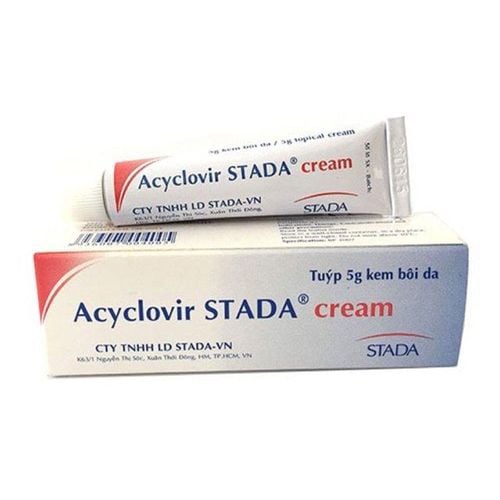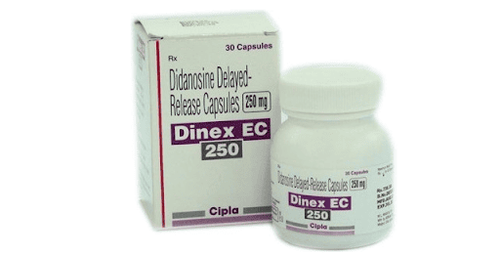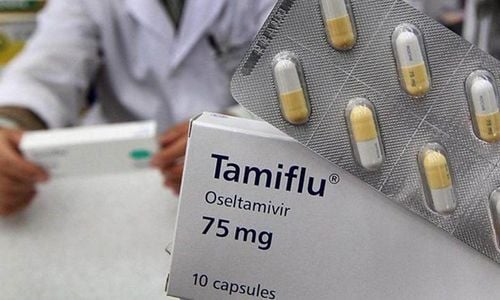This is an automatically translated article.
Emtricitabine Stada 200 mg is indicated for the treatment of HIV-1 infection in adults, adolescents and children 4 months of age and older who are used in combination therapy with other antiretroviral agents. Let's find out the necessary information about Emtricitabine Stada 200 mg drug through the article below.
1. What is Emtricitabine?
Generic name (Active ingredient): Emtricitabine (Emcitritabin).
Type of drug: Antiretroviral, HIV nucleoside reverse transcriptase inhibitor (NRTI).
Drug form and strength
Hard capsule 200 mg
Combination tablet 100 mg, 200 mg
Oral solution 10 mg/ml
2. Uses of Emtricitabine Stada 200 mg
Indications
Emtricitabine is used:
Treatment of HIV-1 infection in adults, adolescents and children 4 months of age and older used in combination therapy with other antiretrovirals. Prophylaxis against HIV-1 exposure. Dosage - Administration
Adults:
Hard Capsules:
Can be taken with or without food. The recommended dose is 200mg/time/day. If the patient vomits within 1 hour of taking it, another dose should be taken. If the patient vomits more than 1 hour after taking the dose, no further dose is required. Oral solution:
Can be taken with or without food and using the measuring device that comes with the vial. The recommended dose is 240 mg equivalent to 24 ml of drug solution, taken orally once daily. If the patient vomits within 1 hour of taking it, another dose should be taken. If the patient vomits more than 1 hour after taking the dose, no further dose is required. Children
Oral solution containing 10 mg/mL in infants 0–3 months of age: 3 mg/kg once daily. Oral solution containing 10 mg/mL in children and adolescents 3 months to 17 years of age: 6 mg/kg (maximum 240 mg) once daily. Capsules: In children weighing > 33 kg can swallow intact capsules: 200 mg x 1 time/day. Overdose - missed dose Emtricitabine
Missed dose and treatment:
If you forget to take a dose, take it as soon as you remember. However, if it is almost time for your next dose, skip the missed dose and take your next dose at the scheduled time. Do not take twice the prescribed dose.
Overdose and treatment:
Overdose of emtricitabine over 1200mg will cause symptoms similar to drug side effects but more severe.
If an overdose occurs, the patient should be monitored for signs of toxicity and standard supportive treatment instituted when necessary.
Up to 30% of an emtricitabine dose can be removed by hemodialysis.
3. Emtricitabine side effects
Common
In children: Anemia, changes in skin pigmentation. Mild to moderate headache, dizziness, gastrointestinal disturbances (diarrhea, nausea). Rash, itching, urticaria, skin discoloration (hyperpigmentation on palms and/or soles). Increased creatine kinase, leukopenia, hypertriglyceridemia, hyperglycemia, elevated liver enzymes, hyperbilirubinemia. Insomnia, nightmares. Pain and weakness in the body. Uncommon
Angioedema. Rarely Lactic acidosis. Frequency not determined Exacerbation of hepatitis after discontinuation of therapy: Immune activation syndrome. Bone necrosis.
4. Notes when using Emtricitabine drug
Contraindications
Hypersensitivity to emtricitabine or to any of its ingredients.
General Note
Lactic acidosis and hepatomegaly with steatosis, including death, have been reported in patients receiving HIV nucleoside reverse transcriptase inhibitors (NRTIs) in addition to other antiretroviral agents. . Severe, acute exacerbations of hepatitis B (HBV) have been reported following discontinuation of emtricitabine-containing preparations in HIV-1 and HBV-coinfected patients. Emtricitabine is not recommended as monotherapy for the treatment of HIV infection. It must be used in combination with other antiretroviral agents. Medicines containing emtricitabine or lamivudine should not be combined. Patients receiving emtricitabine or any other antiretroviral therapy may continue to develop opportunistic infections and other complications of HIV infection, and therefore should be monitored to treat patients with HIV-associated diseases. It is important to take precautions to prevent STIs despite using the drug. Caution should be exercised when emtricitabine is co-administered with drugs that increase weight, increase blood lipids and glucose levels during antiviral therapy. Lipodystrophy: physical symptoms of body fat redistribution such as abdominal obesity, fat accumulation in the shoulder blades, atrophy of the extremities, breast enlargement and symptoms of Cushing's syndrome. Patients with pre-existing liver dysfunction including chronic active hepatitis have an increased frequency of liver function abnormalities during combination antiretroviral therapy. If there is evidence of exacerbation of liver disease in these patients, discontinuation or discontinuation of treatment should be considered. In clinical trials, fetal exposure to nucleotide antivirals in utero experienced major adverse reactions reported as hematologic disorders (anemia, neutropenia) and metabolic disorders (hyperlactatemia, hyperlipidemia). These events are usually temporary. Late-onset neurological disorders have rarely been reported (hypertonia, seizures, abnormal behavior). Immune reconstitution syndrome: In HIV-infected patients with pre-existing severe immunodeficiency, usually within the first few weeks or months after initiation of antiretroviral therapy, the inflammatory response is asymptomatic. Symptoms or opportunistic infections may arise and cause serious clinical problems or worsen symptoms. Infections include cytomegalovirus retinitis, generalized and/or localized mycobacterial infections, and Pneumocystis jirovecii pneumonia. Any inflammatory symptoms should be evaluated and treatment instituted as needed. Autoimmune disorders (such as Graves' disease, polymyositis, Guillain-Barré syndrome, and autoimmune hepatitis) have also been reported to occur during immune reactivation. Osteonecrosis: Has been reported particularly in patients with advanced HIV disease and/or long-term treatment with combination antiretroviral drugs. Patients should seek medical attention if they experience joint pain, stiffness or difficulty in movement. In addition to the adverse reactions experienced by adults, anemia and skin pigmentation changes occurred more frequently in clinical trials involving pediatric HIV-infected patients. Caution to pregnant women
There are data from studies in pregnant women showing no malformations or fetal/neonatal toxicity associated with emtricitabine. The use of emtricitabine may be considered during pregnancy, if necessary. Caution to Lactation Women
Emtricitabine has been shown to be excreted in human milk. There is not enough information on the effects of emtricitabine in infants/children. Therefore, the drug should not be used during breastfeeding. As a general rule, women with HIV should not breast-feed under any circumstances to avoid transmitting HIV to their babies. Notes on driving and operating machines
No studies have shown that drug use affects the ability to drive and use machines. However, patients should exercise caution when driving or operating machinery because the drug may cause dizziness.
5. Drug interactions
Interactions with other drugs
Concomitant use of emtricitabine with didanosine, stavudine, and lamivudine is not recommended due to increased toxicity.
Combinations for additive or synergistic effects: delavirdine, efavirenz, nelfinavir, nevirapine, ritonavir, saquinavir, tipranavir, zidovudine.
Drug interactions can change how the drug works or increase the effect of side effects. This document does not cover all possible drug interactions. Make a list of all the medicines you are taking (including prescription, nonprescription and dietary supplements) and show them to your doctor or pharmacist.
Please dial HOTLINE for more information or register for an appointment HERE. Download MyVinmec app to make appointments faster and to manage your bookings easily.













